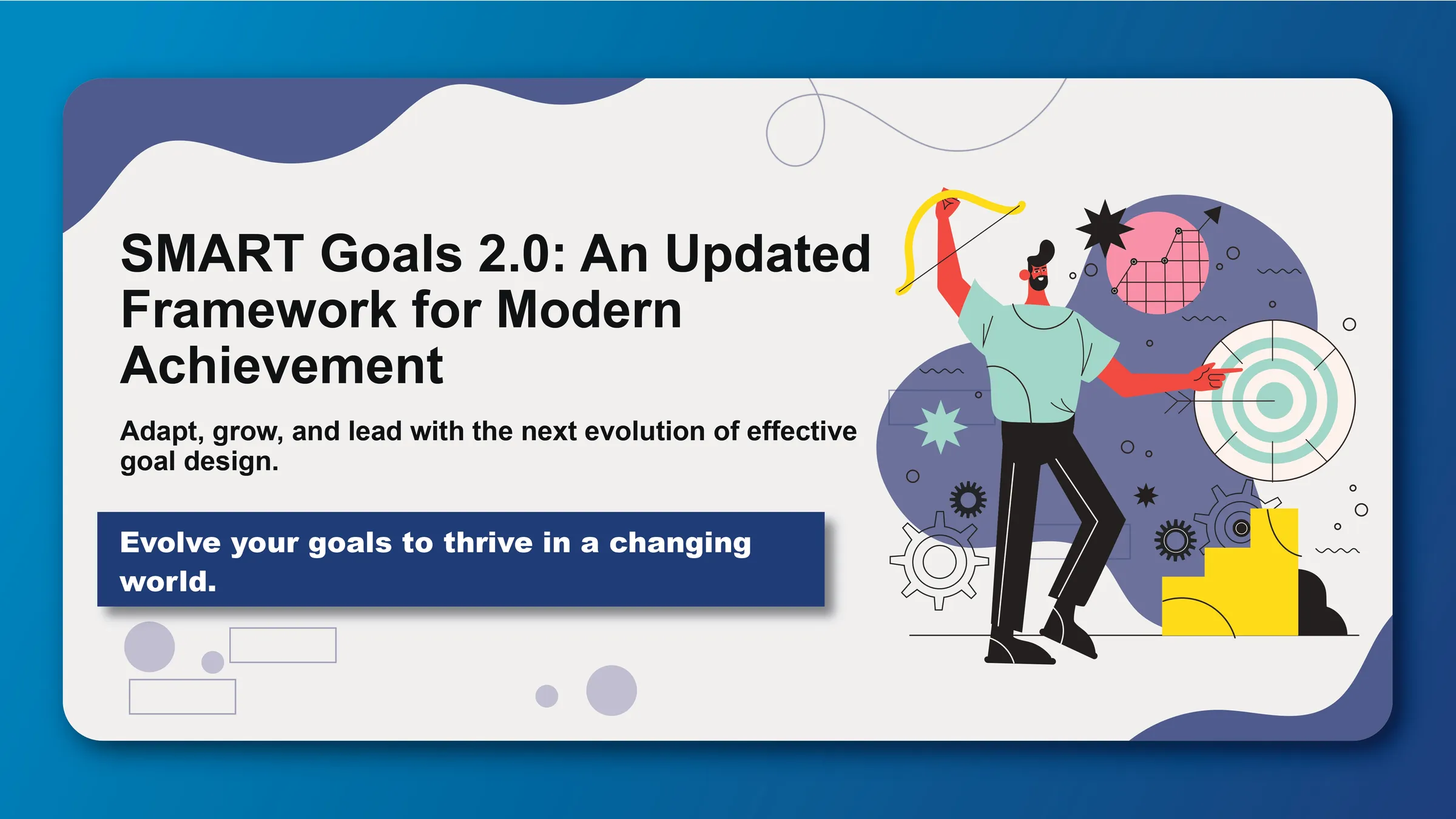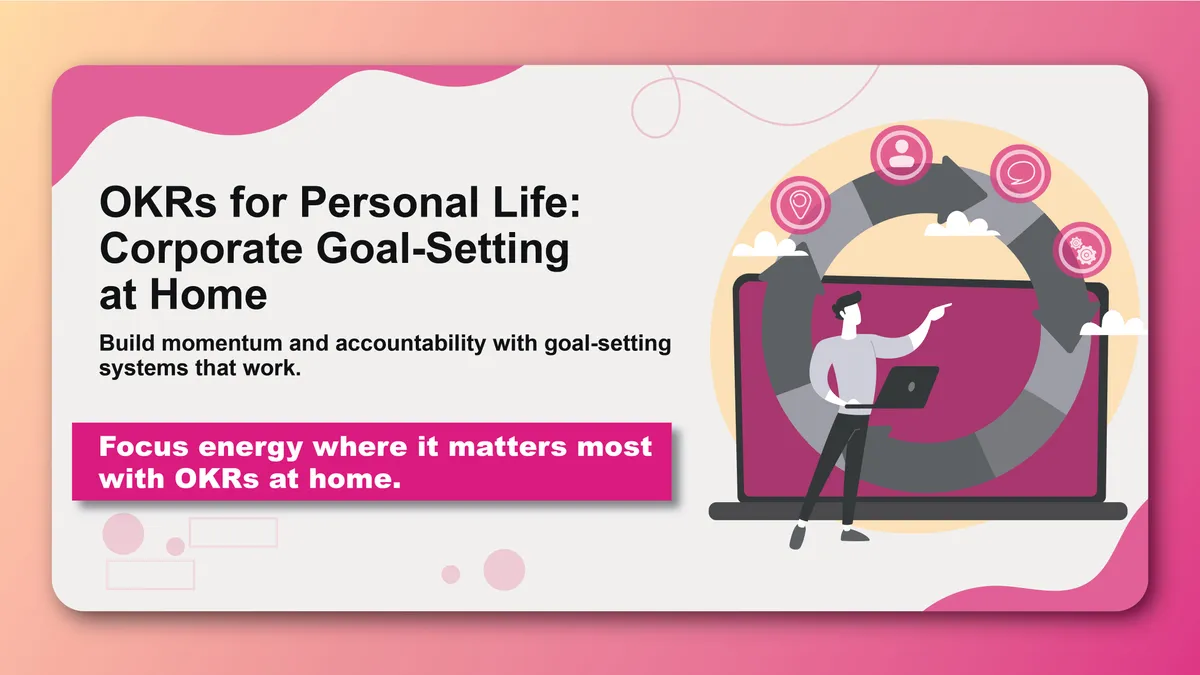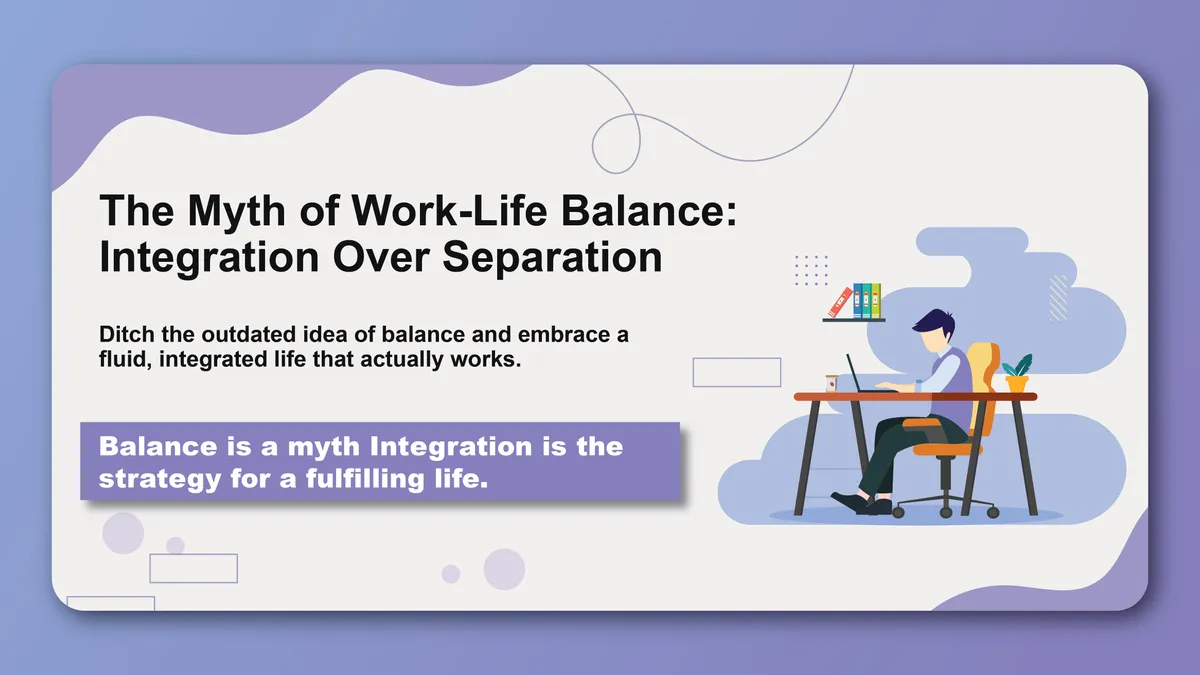For decades, the SMART framework has been the gold standard for goal setting. Specific, Measurable, Achievable, Relevant, and Time-bound—these five criteria have guided millions of people toward their objectives. But the world has changed dramatically since the 1980s when SMART goals were first popularized.
Today's environment is more complex, uncertain, and rapidly changing than ever before. We work in global teams across time zones, navigate constant technological disruption, and face unprecedented levels of information overload. The linear, rigid approach of traditional SMART goals, while still valuable, sometimes feels inadequate for modern challenges.
What if we could evolve the SMART framework to better serve our current reality? What if we could maintain the clarity and structure that made SMART goals successful while adding the flexibility and adaptability that modern achievement requires?
This is SMART Goals 2.0—an updated framework that honors the proven principles of the original while addressing the complexities of contemporary goal achievement. It's designed for a world where adaptability matters as much as specificity, where learning often trumps mere completion, and where the journey toward a goal may be as important as reaching the destination itself.
The Evolution from SMART to SMART 2.0
What SMART Goals Got Right
Clarity and Structure The original SMART framework provided much-needed clarity in goal setting, replacing vague aspirations with concrete, actionable objectives.
Accountability Measurable and time-bound criteria created built-in accountability mechanisms that made goal tracking possible and meaningful.
Achievability Focus The emphasis on achievable goals helped people set realistic expectations and avoid the frustration of impossible objectives.
Relevance Consideration Ensuring goals aligned with broader purposes helped prevent wasted effort on meaningless achievements.
Where Traditional SMART Falls Short
Rigidity in a Fluid World Traditional SMART goals assume a stable environment where the goal, path, and timeline remain constant. Modern reality is more dynamic.
Binary Success Metrics The framework often creates an all-or-nothing mentality where partial progress isn't properly valued or learning from "failure" isn't recognized.
Limited Adaptability Once set, traditional SMART goals resist modification, even when circumstances change or new information emerges.
Process vs. Outcome Confusion The framework focuses primarily on outcomes without adequately addressing the systems and processes that create sustainable success.
Individual Focus Traditional SMART goals often ignore the collaborative, interconnected nature of modern achievement.
Introducing SMART 2.0: The Enhanced Framework
S - Strategic (Not Just Specific)
Traditional SMART: Specific goals that clearly define what will be accomplished.
SMART 2.0: Strategic goals that are specific AND aligned with broader vision and values.
The Enhancement While specificity remains important, strategic thinking ensures your goals contribute to your larger life or business strategy. This prevents achieving specific goals that ultimately don't matter.
Strategic Questions
- How does this goal advance my broader vision?
- What strategic capability does achieving this goal develop?
- How does this goal create leverage for future opportunities?
- What would happen if I achieved this goal but nothing else changed?
Example Evolution
- Traditional: "Increase website traffic by 25% in 6 months"
- Strategic: "Build sustainable content marketing capability by increasing website traffic 25% through valuable content creation, developing our expertise brand"
M - Meaningful (Not Just Measurable)
Traditional SMART: Measurable goals with clear metrics for tracking progress.
SMART 2.0: Meaningful goals that are measurable AND personally significant.
The Enhancement While metrics remain crucial, meaningful goals connect to your deeper values and intrinsic motivation. This creates sustainable motivation and prevents the pursuit of empty achievements.
Meaningful Metrics
- Leading indicators vs. lagging indicators
- Qualitative measures alongside quantitative ones
- Progress measures vs. just outcome measures
- Personal significance measures
Example Evolution
- Traditional: "Run a marathon (26.2 miles) in under 4 hours"
- Meaningful: "Complete my first marathon in under 4 hours as a demonstration of discipline and commitment to personal health, tracking both physical preparation and mental resilience development"
A - Adaptive (Not Just Achievable)
Traditional SMART: Achievable goals that are realistic given current resources and constraints.
SMART 2.0: Adaptive goals that are achievable AND flexible enough to evolve with changing circumstances.
The Enhancement Adaptive goals maintain the achievability principle while building in flexibility. They anticipate change and include mechanisms for adjustment without abandoning the core objective.
Adaptive Elements
- Multiple pathways to the same outcome
- Built-in review and adjustment points
- Scenario planning for different conditions
- Learning objectives alongside achievement objectives
Example Evolution
- Traditional: "Save $10,000 in 12 months by cutting expenses 20%"
- Adaptive: "Build financial resilience by accumulating $10,000 within 12 months through expense reduction (primary) and income increase (secondary), with quarterly reviews to adjust approach based on changing circumstances"
R - Regenerative (Not Just Relevant)
Traditional SMART: Relevant goals that align with broader objectives and current priorities.
SMART 2.0: Regenerative goals that are relevant AND create positive compounding effects.
The Enhancement Regenerative goals don't just align with current priorities—they create capabilities, relationships, and resources that make future goals easier to achieve.
Regenerative Characteristics
- Skill development that transfers to other areas
- Relationship building that creates future opportunities
- System creation that produces ongoing benefits
- Knowledge acquisition that compounds over time
Example Evolution
- Traditional: "Complete project management certification relevant to current role"
- Regenerative: "Develop project management expertise through certification and real-world application, building systematic approaches and professional network that enhance all future collaborative work"
T - Trackable (Not Just Time-bound)
Traditional SMART: Time-bound goals with clear deadlines for completion.
SMART 2.0: Trackable goals with clear deadlines AND comprehensive progress monitoring systems.
The Enhancement While deadlines remain important, trackable goals emphasize ongoing monitoring and adjustment. They focus on the quality of progress, not just the timeline.
Trackable Systems
- Regular check-in schedules
- Multiple progress indicators
- Feedback loops for course correction
- Documentation of lessons learned
- Celebration of milestone achievements
Example Evolution
- Traditional: "Launch new product by December 31st"
- Trackable: "Launch new product by December 31st with monthly progress reviews, weekly team check-ins, and comprehensive tracking of development milestones, user feedback, and market response"
SMART 2.0 in Practice
The Enhanced Goal-Setting Process
Phase 1: Strategic Alignment Before writing your goal, ensure it aligns with your broader vision and values. Ask yourself why this goal matters and how it serves your larger purposes.
Phase 2: Meaningful Metrics Design Identify both quantitative and qualitative measures that truly reflect progress toward what matters. Include leading indicators that help you adjust course early.
Phase 3: Adaptive Planning Create your primary plan while also developing alternative approaches and built-in review points for adjustment.
Phase 4: Regenerative Impact Assessment Evaluate how achieving this goal will create capabilities, relationships, or resources that benefit future endeavors.
Phase 5: Trackable System Creation Design a comprehensive monitoring system that provides regular feedback and supports continuous improvement.
SMART 2.0 Template
Strategic Objective: What you want to achieve and why it matters strategically
Meaningful Measures:
- Quantitative: Specific numbers and metrics
- Qualitative: Qualities and characteristics
- Leading Indicators: Early signs of progress
Adaptive Approach:
- Primary Path: Main strategy for achievement
- Alternative Paths: Backup approaches
- Review Schedule: When and how you'll assess and adjust
Regenerative Benefits:
- Skills Developed: Capabilities gained
- Relationships Built: Connections created
- Systems Created: Ongoing benefits
Trackable Timeline:
- Deadline: Final completion date
- Milestones: Key progress points
- Check-in Schedule: Regular review rhythm
Case Studies: SMART vs. SMART 2.0
Case Study 1: Career Development
Traditional SMART Goal "Get promoted to Senior Manager within 18 months by completing leadership training and exceeding performance targets."
SMART 2.0 EvolutionStrategic: Develop leadership capabilities for Senior Manager role within 18 months, building foundation for executive advancement Meaningful: Promote based on demonstrated leadership impact (team engagement scores, project success rates, mentorship effectiveness) and training completion Adaptive: Primary path through leadership training + stretch assignments; alternative through lateral move + external leadership development; quarterly career conversations with manager Regenerative: Build lasting leadership skills, expand professional network, create mentorship relationships, develop systematic approach to team development Trackable: 18-month timeline with 6-month milestone reviews, monthly 1:1s with manager, quarterly 360 feedback collection, ongoing tracking of team metrics and project outcomes
Case Study 2: Health and Fitness
Traditional SMART Goal "Lose 30 pounds in 6 months by exercising 5 times per week and following a 1,500-calorie diet."
SMART 2.0 EvolutionStrategic: Transform relationship with health by achieving sustainable 30-pound weight loss in 6 months, building lifelong wellness habits Meaningful: Lose 30 pounds while improving energy levels, sleep quality, and overall life satisfaction; track both scale and non-scale victories Adaptive: Primary approach through structured exercise + nutrition plan; alternative approaches include different exercise modalities, nutrition coaching, medical consultation; monthly plan reviews Regenerative: Develop cooking skills, build exercise habits, create support community, establish stress management practices, learn sustainable lifestyle design Trackable: 6-month timeline with monthly weigh-ins, weekly habit tracking, bi-weekly body composition analysis, daily energy and mood journaling
Case Study 3: Business Growth
Traditional SMART Goal "Increase annual revenue by 40% within 12 months through new product launch and expanded marketing."
SMART 2.0 EvolutionStrategic: Build sustainable growth engine achieving 40% revenue increase in 12 months while strengthening market position and customer relationships Meaningful: Increase revenue 40% through new customer acquisition and existing customer expansion, tracking customer lifetime value and satisfaction alongside revenue metrics Adaptive: Primary strategy through new product + marketing expansion; alternatives include partnership development, market expansion, service offerings; quarterly strategy reviews Regenerative: Develop product development capabilities, build marketing systems, expand customer database, create scalable sales processes, strengthen team capabilities Trackable: 12-month timeline with quarterly business reviews, monthly sales and marketing metrics, weekly team check-ins, continuous customer feedback collection
Common SMART 2.0 Implementation Challenges
Challenge 1: Complexity Overwhelm
The Problem: SMART 2.0 can seem more complex than traditional goal setting.
The Solution:
- Start with one or two enhanced elements, not all five at once
- Use templates and frameworks to simplify the process
- Focus on the enhanced elements most relevant to your situation
- Build complexity gradually as you become comfortable with the framework
Challenge 2: Perfectionism Paralysis
The Problem: Trying to create the perfect SMART 2.0 goal before taking action.
The Solution:
- Remember that goals can be refined over time
- Start with a good enough goal and improve through iteration
- Focus on getting started rather than getting it perfect
- Use the adaptive element to build in improvement over time
Challenge 3: Tracking Overload
The Problem: Creating tracking systems that are more work than the goal itself.
The Solution:
- Start with simple tracking and add complexity as needed
- Use existing tools and systems when possible
- Focus on the most important metrics rather than tracking everything
- Automate tracking wherever possible
Challenge 4: Review Fatigue
The Problem: Frequent reviews becoming burdensome or repetitive.
The Solution:
- Make reviews valuable by focusing on learning and adjustment
- Vary review formats to maintain engagement
- Combine reviews with other activities when possible
- Adjust review frequency based on goal complexity and timeline
Digital Tools for SMART 2.0 Goals
Goal-Setting Platforms
Comprehensive Systems
- Notion or Obsidian for complex goal frameworks
- Asana or Monday.com for team-based goals
- OmniFocus or Todoist for personal goal management
- Weekdone or 15Five for OKR-style tracking
Specialized Tools
- Coach.me for habit-based goals
- Strava or MyFitnessPal for health goals
- Mint or YNAB for financial goals
- LinkedIn Learning or Coursera for skill development goals
Tracking and Analytics
Progress Monitoring
- Spreadsheet templates for custom tracking
- Habit tracking apps for daily activities
- Time tracking tools for effort measurement
- Survey tools for qualitative feedback collection
Review and Reflection
- Calendar scheduling for regular reviews
- Journal apps for reflection documentation
- Video logging for progress documentation
- Dashboard tools for visual progress tracking
Building Your SMART 2.0 Practice
Week 1: Framework Introduction
- Choose one existing goal to convert to SMART 2.0
- Work through each enhanced element systematically
- Create your first SMART 2.0 goal statement
- Set up basic tracking systems
Week 2: Implementation and Refinement
- Begin working toward your SMART 2.0 goal
- Use your tracking systems and gather initial data
- Identify any framework adjustments needed
- Refine your approach based on early experience
Week 3: Review and Adaptation
- Conduct your first formal goal review
- Assess what's working and what isn't
- Make adjustments to your approach or timeline
- Document lessons learned for future goals
Week 4: System Integration
- Integrate SMART 2.0 with your existing productivity systems
- Create templates for future goal setting
- Plan your next SMART 2.0 goal
- Share the framework with others who might benefit
The Future of Goal Setting
Emerging Trends
AI-Enhanced Goal Setting
- Predictive analytics for goal achievability
- Automated progress tracking and insights
- Personalized goal recommendations
- Smart reminders and coaching prompts
Collaborative Goal Ecosystems
- Shared goal frameworks for teams and organizations
- Community-based accountability systems
- Cross-functional goal alignment platforms
- Social goal-sharing and support networks
Biometric Integration
- Health data integration for wellness goals
- Performance tracking for physical goals
- Stress and energy monitoring for goal pacing
- Sleep and recovery data for goal timing
Evolution Considerations
Continuous Adaptation
- Goals that evolve with changing circumstances
- Machine learning for goal optimization
- Real-time feedback and adjustment systems
- Dynamic goal hierarchies and dependencies
Values-Based Alignment
- Goal setting that starts with values clarification
- Automatic alignment checking against personal mission
- Ethics and sustainability integration
- Long-term impact consideration frameworks
SMART Goals 2.0 isn't about abandoning what worked in the original framework—it's about evolving goal setting to match the complexity and dynamism of modern life. When you set goals that are strategic, meaningful, adaptive, regenerative, and trackable, you don't just achieve more—you become more.
The enhanced framework recognizes that in today's world, the process of pursuing goals is often as valuable as achieving them. By building adaptability, learning, and regenerative benefits into your goal-setting process, you create a practice that serves not just your immediate objectives but your long-term growth and success.
Start with one goal, apply the SMART 2.0 framework thoughtfully, and discover how enhanced goal setting can transform both what you achieve and who you become in the process.
Ready to evolve your goal-setting practice with SMART 2.0? Create and track your strategic, adaptive goals with Habityzer and experience how enhanced goal setting can accelerate your achievement and growth.



